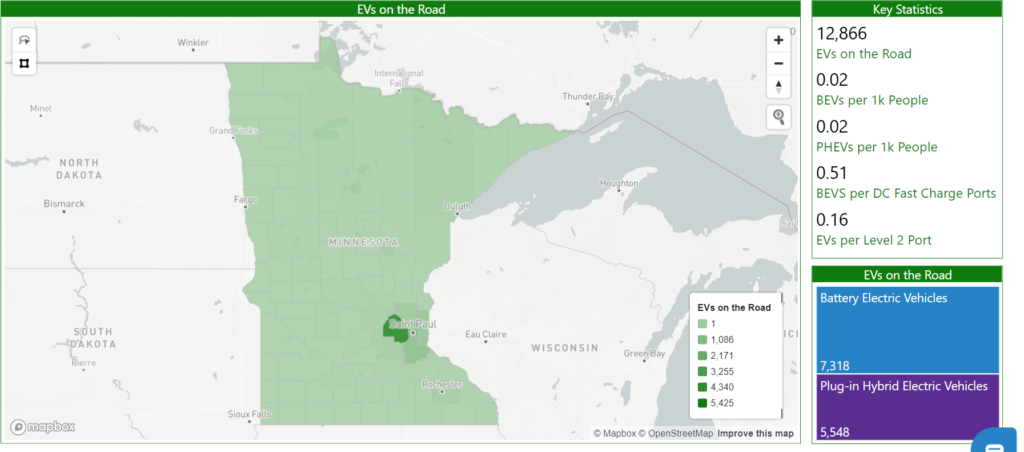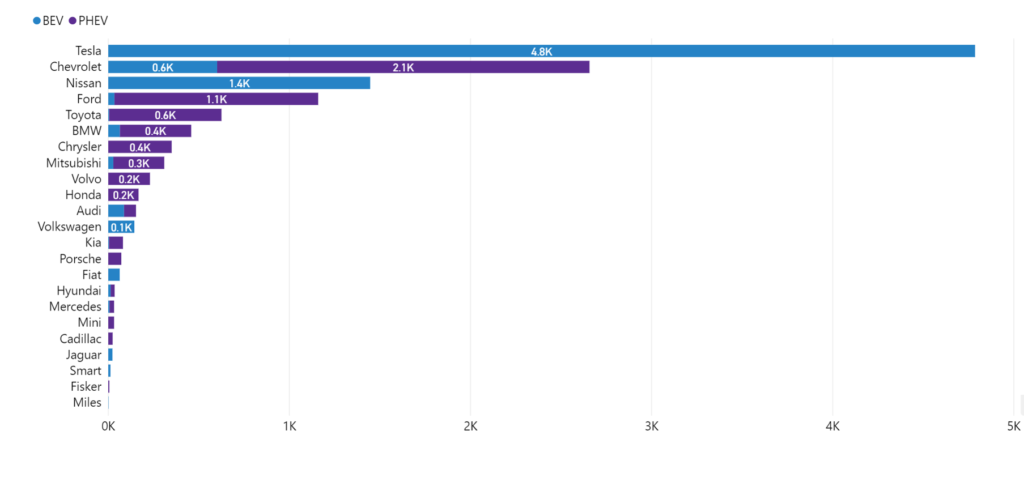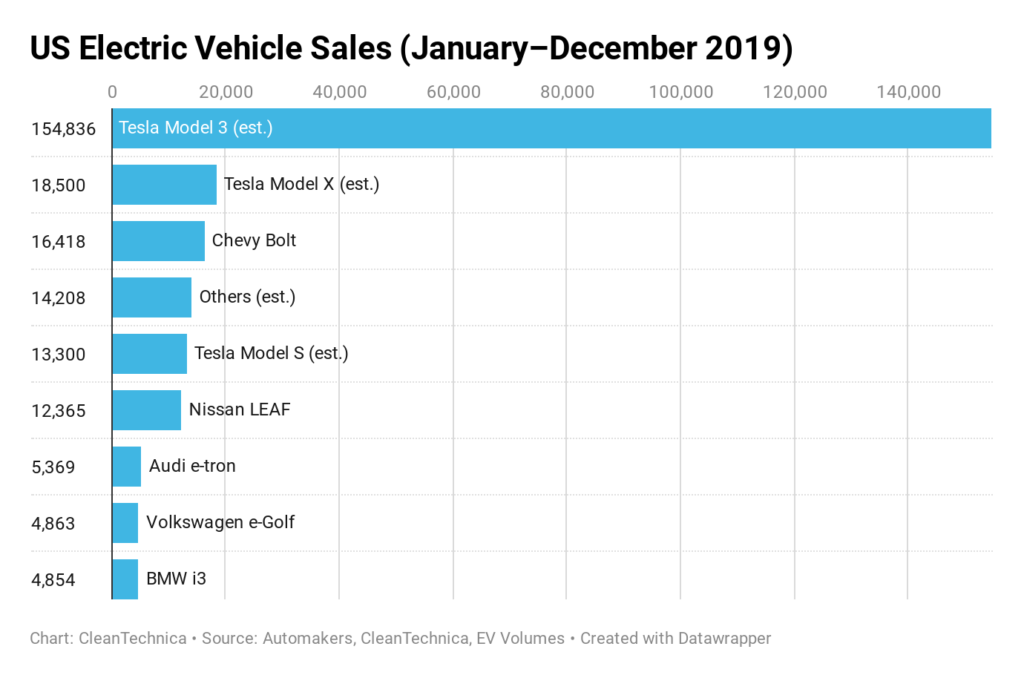Online Dashboard Shows 82 Percent Electric Vehicles Are Registered in the Twin Cities
Studies by federal energy agencies and universities often suggests that wealthy, urban areas have higher levels of electric vehicle (EV) ownership than relatively less affluent rural areas. An online dashboard created by Atlas Public Policy shows the vast majority of the 12,866 EVs registered in Minnesota are located in the Metro retro region, confirming that Minnesota follows the national trend.
The website also distinguishes between the different types of electric vehicles commonly sold on the market. Electric vehicles that rely exclusively on their batteries, like a Tesla, are categorized as Battery Electric Vehicles (BEVs), and vehicles liked the now-discontinued Chevy Volt, which have batteries and a normal gas tank, are categorized as plug-in hybrid electric vehicles (PHEVs).
The map below shows that there were 7,318 BEVs registered in Minnesota and 5,548 PHEVs, as of February 1, 2020. The map shows that only three Minnesota counties have more than 1,086 electric vehicles of any kind, Dakota, Hennepin, Ramsey, accounting for 1,247, 5,425, 1,763 of EVs, respectively.

When we look at the seven county Metro area, we see that this geographic region accounts for 10,625 (82.5 percent) of all the EVs on Minnesota roads. Among these EVs are 6,353 BEVs (86.8 percent of the statewide total) and 4,272 PHEVs (77 percent of the statewide total).

The dashboard also tells us what kinds of EVs are being purchased in Minnesota. The graph below shows that Tesla accounts for 65 percent of BEV registrations, with Nissan accounting for approximately 20 percent of the BEV market.

The data that can be accessed in the dashboard can be even more granular, showing the most popular models in Minnesota, as well. Here we can see that the Tesla Model 3, the most affordable Tesla offered, has the highest market share, accounting for about 37 percent of BEV registrations in Minnesota. Unsurprisingly, the Chevy Volt leads PHEVs, and the Nissan Leaf is second-most owned BEV.

This dashboard is an important tool that can help us understand the impacts of various components of energy policy in Minnesota. For example, Governor Walz wants to impose California car mandates on Minnesota that would require autodealers to stock a certain number of EVs in the state. The Walz administration’s justification for imposing these regulations on Minnesotans is a claim that he is expanding consumer choice and giving Minnesotans access to the EVs they want, but currently cannot get.
However, this data shows that Minnesotans already have access to all of the top selling EVs in the nation, meaning the Walz administration isn’t expanding consumer choice, it is actually just mandating dealerships stock cars on their lots that nobody wants.

Similarly, when it comes to legislation that would give subsidies to people who purchase electric vehicles, such as the proposed ECO Act, we now know for certain that most of the benefits of this provision in the legislation would help the seven-county metro area.
Electric cars deserve every opportunity to compete for market share in a free market area. However, Minnesotans should not be required to pay more in taxes, or in their electric and natural gas bills, to subsidize electric cars or charging infrastructure.